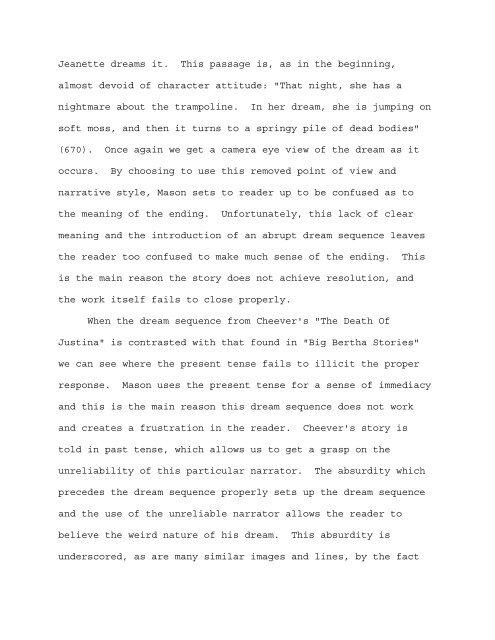Create successful ePaper yourself
Turn your PDF publications into a flip-book with our unique Google optimized e-Paper software.
Jeanette dreams it. This passage is, as in the beginning,<br />
almost devoid of character attitude: "That night, she has a<br />
nightmare about the trampoline. In her dream, she is jumping on<br />
soft moss, and then it turns to a springy pile of dead bodies"<br />
(670). Once again we get a camera eye view of the dream as it<br />
occurs. By choosing to use this removed point of view and<br />
narrative style, Mason sets to reader up to be confused as to<br />
the meaning of the ending. Unfortunately, this lack of clear<br />
meaning and the introduction of an abrupt dream sequence leaves<br />
the reader too confused to make much sense of the ending. This<br />
is the main reason the story does not achieve resolution, and<br />
the work itself fails to close properly.<br />
When the dream sequence from Cheever's "The Death Of<br />
Justina" is contrasted with that found in "Big Bertha Stories"<br />
we can see where the present tense fails to illicit the proper<br />
response. Mason uses the present tense for a sense of immediacy<br />
and this is the main reason this dream sequence does not work<br />
and creates a frustration in the reader. Cheever's story is<br />
told in past tense, which allows us to get a grasp on the<br />
unreliability of this particular narrator. The absurdity which<br />
precedes the dream sequence properly sets up the dream sequence<br />
and the use of the unreliable narrator allows the reader to<br />
believe the weird nature of his dream. This absurdity is<br />
underscored, as are many similar images and lines, by the fact

















